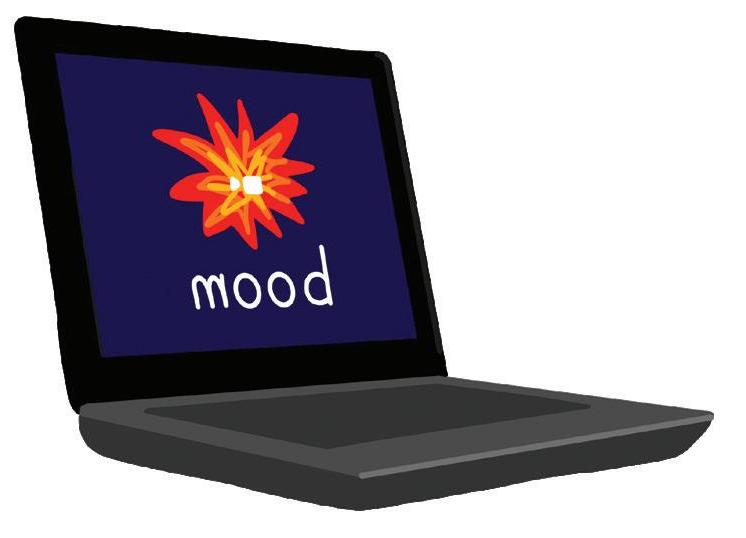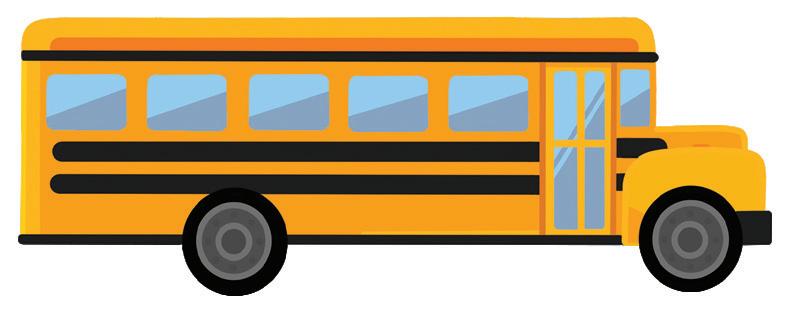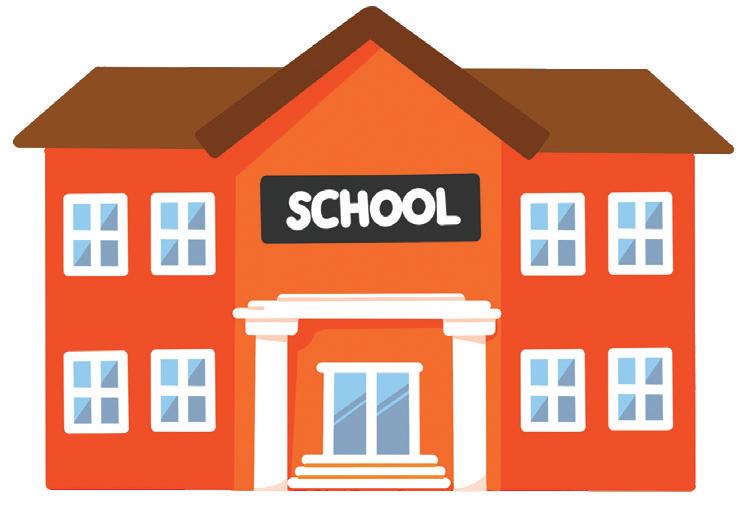
12 minute read
OPINION
from 2020-10-16
ONLINE VS
RUBA AHMED
Advertisement
Let’s be realistic, what teenager can stand eight hours of wearing a mask and staying several feet away from their friends? Here’s the truth: the pandemic is real and dangerous, and sending students to school is an unnecessary health risk that can easily be avoided. Although the rate of coronavirus infection is lower in the younger population, students are still able to transmit the disease to others who are older or have compromised immune systems.
With 400 students in the building at the same time, social distancing is very difficult and will most likely be ignored. Teachers were instructed to alternate desks between rows to provide more space between students, which is certainly better than nothing, but according to the New York Times, new data shows even six feet isn’t enough because the virus can travel 20 feet or more depending on air currents. Students won’t be able to sit close together in groups, eliminating any chance for successful collaboration. Furthermore, according to Washington University, the lack of group work may take away valuable benefits such as material retention, knowledge acquisition, and problem-solving skills that students gain from collaboration. Online school has the capability of breakout rooms which, although awkward at times, are productive.
Classrooms and hallways aren’t the only places social distancing is needed. The Return-toLearn guide provided by the ICCSD states that There is no doubt this year has been radically different. Students were forced into making the difficult decision between returning to school partly in person or staying at home and starting the year virtually. Now, the most important question is: which one is better?
buses will be limited to 41 students out of a maximum of 71, and if alarm bells aren’t ringing in your head yet, that means the buses would be holding over 50% capacity. If the bus reaches the limit, it will leave some students sitting right next to each other, meaning students could already be exposed to the virus before reaching the school’s doors.
Social distancing alone, however, is not enough without masks which are only effective if worn correctly. If a person touches their mask to adjust it and then rubs their eyes with that same hand, according to the University of Maryland Medical System, that person may have just welcomed the virus into their body. Students will also have to risk infection when they take their 659 44.70%
Students from West High chose to do online school masks off to eat lunch at school. Your best bet is just to be somewhere where the coronavirus isn’t likely to be present—your house. No matter how careful you think you are, you can never be too safe.
Lastly, what students don’t get symptoms from, they can bring home to their dear ones. Anyone can contract the virus, be asymptomatic, and cause widespread infection. In fact, asymptomatic carriers account for 40% of cases, according to The Washington Post. The best thing to do is to not be exposed to it in the first place. Just ask Israel, The Wall Street Journal says that their COVID-19 cases sky-rocketed from less than 50 reported cases per day to 1,500 upon returning to school. Similarly, Al-Jazeera, an independent news organization, reported that a school in Georgia discovered 100 confirmed COVID-19 cases after only the second week of reopening, causing 1600 additional students to quarantine. Something as simple as school reopening can have drastic consequences on the whole community.
It’s important to mention that some people may not have much freedom when it comes to choosing between online and in-person learning. With fewer students in school, however, the district could focus more on providing resources for those who need it to ensure a more equalized online learning experience. Of course, some


32
OPINION
things are out of the district’s hand, since Gov. Kim Reynolds had placed a mandate on school reopening. The more students who choose the online school option, the less dangerous it is for those who must attend in-person school.
COVID-19 is a worldwide issue that can result in terrible consequences for those who contract it. When you look at the grand scheme of things, you go to school for many years, but you live only once. The pandemic is a health issue and this year, so is returning to school.
ART AND DESIGN BY SILA DURAN PHOTOS BY CLARE LOUSSAERT AND KARA WAGS
IN PERSON
OPPOSING VIEWPOINTS
We shouldn’t have to make this choice. No parent should be forced to balance keeping their child safe with meeting their basic educational and social needs. Our pitiful national response to the pandemic has created an arduous situation as we return to school; with better leadership, it could have been vastly different than it is today. Take, for example, New Zealand, where a quick, effective lockdown mitigated the virus with only 21 deaths, allowing students to safely return to in-person school mid-May.
But here we are, grappling with the needless loss of over 200,000 lives to COVID-19. In these circumstances, there is no “perfect” way to start this school year, which is exactly why we need to have options. COVID-19 has proved to be a long withstanding problem, so we must consider how it will impact students not just now but for years to come. The hybrid school model is imperfect, inherently riskier, and not for everyone, but it is crucial that we offer some form of in-person schooling.
Online school has taken a heavy toll on students’ mental health. Zoom doesn’t facilitate easy conversation or relationship building, and spending hours alone in front of a screen every day is demoralizing. Countless students have faced new mental health struggles like anxiety and depression, and symptoms for those with pre-existing mental health conditions have only been amplified. In a USA Today report, three out of 10 parents say their children are experiencing “emotional or mental harm” because of school closures. We are reminded of the importance of emotional well-being on a national scale: In June, the CDC found that 10.7% of young adults surveyed showed serious consideration of suicide in the past 30 days, compared to only half that amount in 2018. Though there are ways to fight isolation and connect with others online, they require students to be more deliberate than in the past. Students who were already “in the loop” and involved still have the tools to connect with others, but those who felt isolated even before the pandemic are at an added disadvantage. This loneliness carries severe future implica-
816
55.30%
Students from West High tions: the American Psychological Association found the long-term health consequences of social isolation, obesity, and smoking to be similar. There is no easy remedy for this, but the structure and opportunity for in-person connections that a hybrid model brings gives students a sense of normalcy and belonging that promote emotional well-being.
Although the district has worked to provide equitable education and fight racial, economic, and social inequality, solely online school serves to widen these gaps. Privileged, often higher-income students, with home situations conducive to studying, have the means to succeed in an online environment while many others do not. KATIE HOEFER GUEST COLUMNIST

Families with working parents and young kids rely on the childcare school provides—otherwise, the responsibility often falls on older siblings, leaving them unable to focus on their own classes.
The opportunity to play sports is crucial for students’ overall well-being, and according to the current state guidelines, school sports can only take place when an in-person option is offered. Sports provide an outlet for stress relief, along with community, discipline, and the structure that many of us are lacking. Sports, as with any in-person event, come with an inherent risk, but in my experience, having a season can actually decrease risky behaviors by promoting safe,


cautious habits both in and out of practice. With the threat of canceled games or seasons, athletes feel responsibility to limit exposures and keep their team safe.
COVID-19 is still a prominent threat that we must take seriously, but it’s not going away anytime soon, so we have to consider not only its immediate risk but its far-reaching impacts. Keeping our community safe and healthy will require mitigation of both COVID-19 and the mental health issues students face. A hybrid model best provides the educational and social elements students need, offering it is the right choice for our district.
OPINION
33
Bringing you back to a time when the election and pandemic weren’t topics of debate that polluted your mind.

BY THE NIGHT SHIFT ART & DESIGN BY AMY LIAO

IT IS WHAT IT IS
Something that is not wet can only become wet once something wet touches it. For example, you can’t make this WSS issue wet by leaving it on a dry surface, but you can with a wet surface. If the paper and everything around it was originally dry, then it has zero potential of getting wet since water is in absence. It is only once you bring in something wet, such as a damp sponge to the paper, that the paper becomes wet. If water was not wet, then it would be impossible for it to make things wet, because only wet things make other things wet.


WATER CANNOT
BE DRY
The Oxford Dictionary definition of ‘dry’ is “free from moisture or liquid; not wet or moist.” One of water’s three forms is a liquid. How can water be free from moisture if water itself is a liquid? If something has no water (or any liquid) on or in it, then that object or substance is dry. Because this can’t physically occur with water since water surrounds, touches and contains itself, then water can’t be dry.





WATER’S MANY
DISGUISES
0ne of ice’s scientific properties is that it is always wet. There is a constant layer of water on its surface regardless of temperature. Don’t believe me? Search it up yourself. You can’t physically make frozen water dry. Ice is a solid, but it is, and will forever be, wet. Ice is literally also water. If ice is wet, water is wet.
Similarly, wet snow exists. As temperatures rise to just above freezing, snow melts slightly. When this happens, more moisture is added to the snow and wet snow is created. When temperatures are lower than freezing, you get powdery snow, or dry snow. This dry snow contains less water and will result in approximately half an inch of water when it melts. Notice how when the snow is made of more water, it is wetter, and when there’s less water, it’s drier. If the reason why snow is wet is because it is made of more water, then whatever is made of the most water is therefore the most wet. What substance has the highest ratio of water to anything else? Pure, clean, liquid water. Water in essence is the wettest substance. You can’t describe snow as wet without describing liquid water as wet too because liquid water is more wet than snow.
34
OPINION

START
BY MISHA CANIN ART AND DESIGN BY XIAOYI ZHU


Stayed in bed for 24 hours (or more)



Forgotten how to do simple math Found a new hobby! Gone on Attended a protest Accidentally spoken while unmuted on a Zoom call Being in isolation can be really hard. You aren’t alone, and if you ever need someone to talk to, please reach out to the West High Guidance Office. WSS is so grateful you’re here, reading a hike our first issue of the year. Thank you for your Turned off your camera, muted yourself, and not paid any attention to your Zoom class Supported a local business support; we appreciate you! Forgotten your mask while leaving the house Worked as an essential worker





Gone on a HAVE YOU EVER? Been picnic Baked banana bread Mailed a letter to a friend! Watched the sunset Didn’t realize it’s been over six months of Social distancing Learned a Tik Tok dance DIRECTIONS Prepare a die (or random number generator). 1. Move according to your roll. 2. If you have done the activity, stay on the tile. If you have not, COVID-19 EDITION Zoom bombed move back two tiles. If you land on a tile on top of a ladder, climb down to the bottom tile. Hung out with friends in a parking lot (socially distanced of course) Forgotten THE MONTH FINISH Gotten a new job Repeat the steps 1-2, and keep track of how many rolls it takes to reach the end. Based on the number of your rolls, WSS will tell you what level of quarantine you have reached. 4-6 ROLLS QUARANTINE QUEEN 7-10 ROLLS SOCIAL DISTANCE SAVVY 11+ ROLLS COUCH POTATO Read the WSS Cover story Gone KAYAKING



